| __timestamp | Parker-Hannifin Corporation | Westinghouse Air Brake Technologies Corporation |
|---|---|---|
| Wednesday, January 1, 2014 | 410132000 | 61886000 |
| Thursday, January 1, 2015 | 403085000 | 71213000 |
| Friday, January 1, 2016 | 359796000 | 71375000 |
| Sunday, January 1, 2017 | 336675000 | 95166000 |
| Monday, January 1, 2018 | 327877000 | 87450000 |
| Tuesday, January 1, 2019 | 294852000 | 209900000 |
| Wednesday, January 1, 2020 | 293837000 | 162100000 |
| Friday, January 1, 2021 | 259039000 | 176000000 |
| Saturday, January 1, 2022 | 191000000 | 209000000 |
| Sunday, January 1, 2023 | 258000000 | 218000000 |
| Monday, January 1, 2024 | 298000000 | 206000000 |
In pursuit of knowledge
In the competitive landscape of industrial innovation, Parker-Hannifin Corporation and Westinghouse Air Brake Technologies Corporation (Wabtec) have demonstrated distinct approaches to research and development (R&D) spending over the past decade. From 2014 to 2023, Parker-Hannifin's R&D expenses have seen a notable decline of approximately 37%, from a peak in 2014 to a low in 2022. This strategic shift may reflect a focus on optimizing existing technologies or reallocating resources to other growth areas.
Conversely, Wabtec's R&D spending has shown a more dynamic trajectory, with a significant increase of over 250% from 2014 to 2023. This surge underscores Wabtec's commitment to innovation, particularly in the transportation sector. However, data for 2024 is missing, leaving room for speculation on future trends.
These contrasting strategies highlight the diverse paths companies can take in driving technological advancement and maintaining competitive edges.
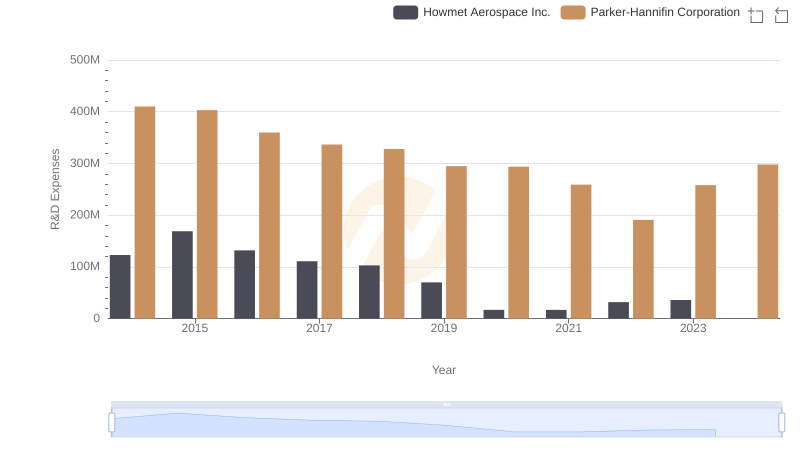
Analyzing R&D Budgets: Parker-Hannifin Corporation vs Howmet Aerospace Inc.
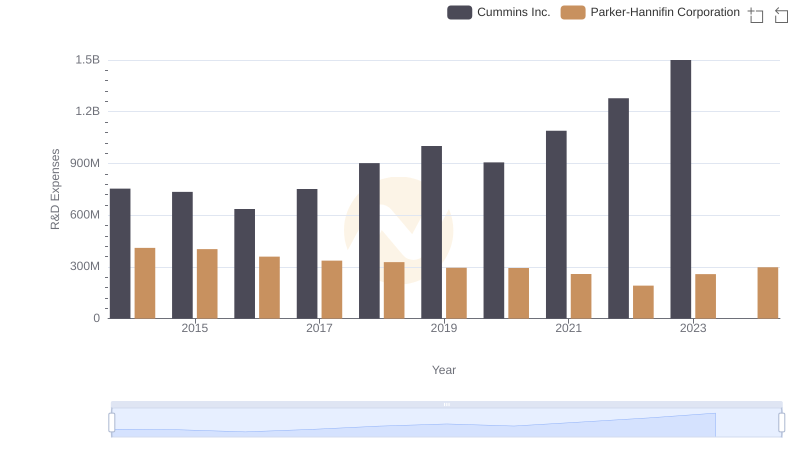
Parker-Hannifin Corporation vs Cummins Inc.: Strategic Focus on R&D Spending

Who Generates Higher Gross Profit? Parker-Hannifin Corporation or Westinghouse Air Brake Technologies Corporation
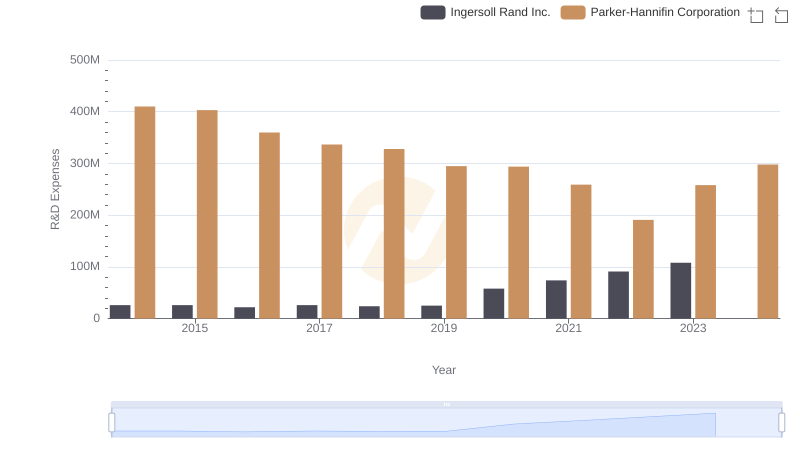
Research and Development: Comparing Key Metrics for Parker-Hannifin Corporation and Ingersoll Rand Inc.
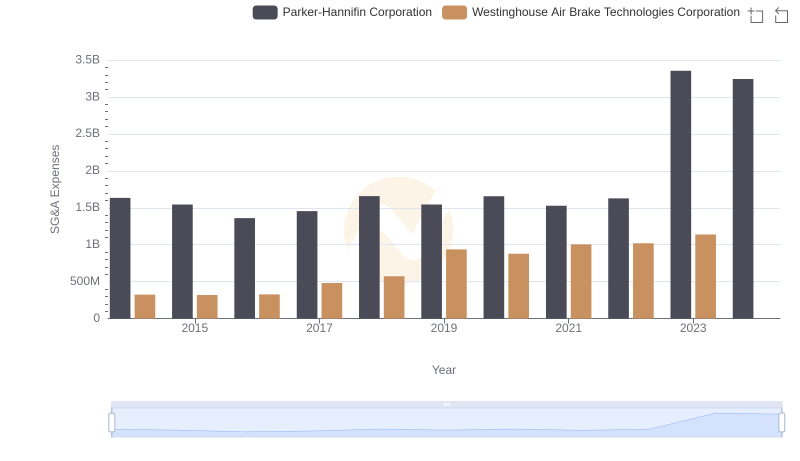
Cost Management Insights: SG&A Expenses for Parker-Hannifin Corporation and Westinghouse Air Brake Technologies Corporation
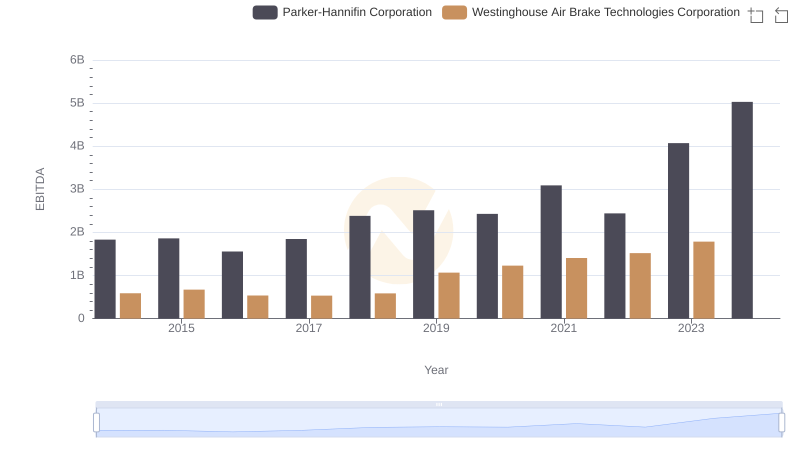
Parker-Hannifin Corporation vs Westinghouse Air Brake Technologies Corporation: In-Depth EBITDA Performance Comparison

Parker-Hannifin Corporation vs Rockwell Automation, Inc.: Strategic Focus on R&D Spending
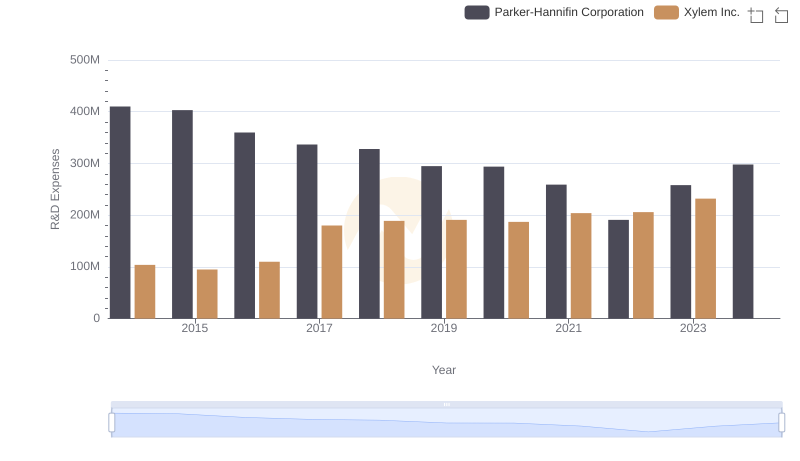
Research and Development Expenses Breakdown: Parker-Hannifin Corporation vs Xylem Inc.
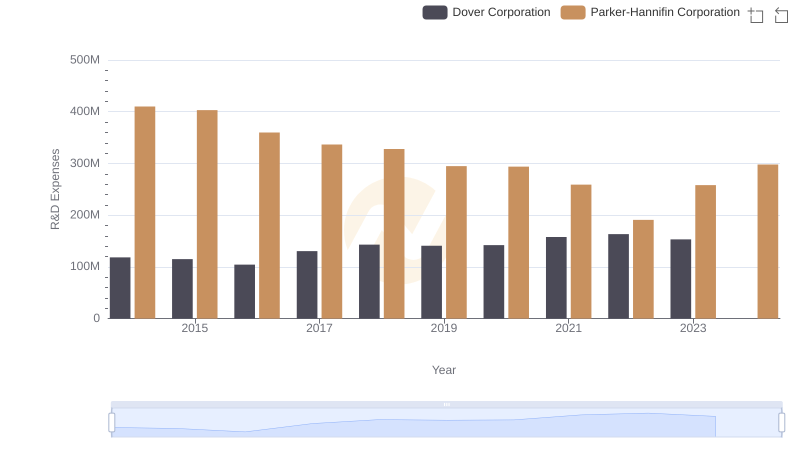
Research and Development: Comparing Key Metrics for Parker-Hannifin Corporation and Dover Corporation